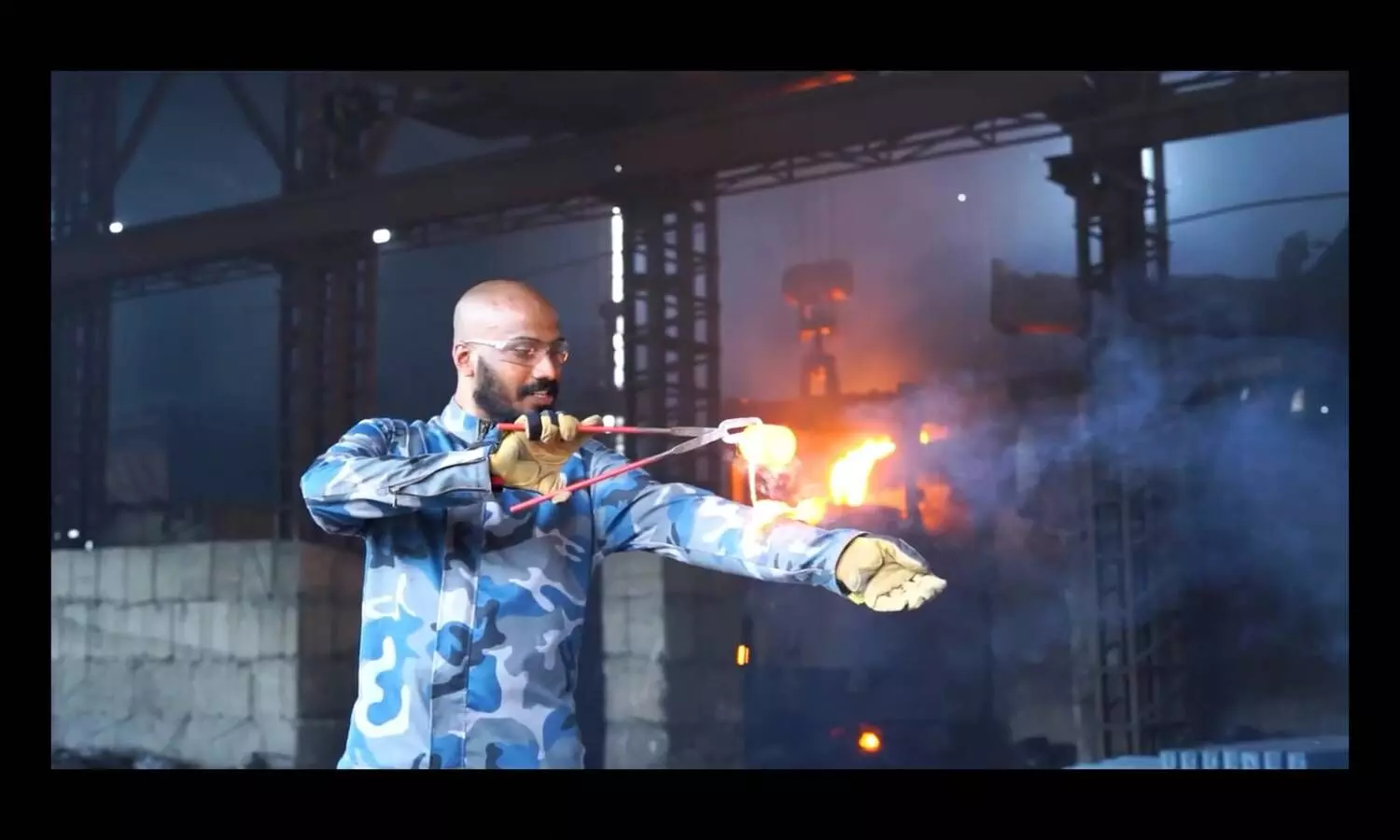Hyd's 'Volcano Man' develops world's first apparel that can withstand extreme temperatures
Named 'Tatrigrade Stealth', the apparel is the first-of-its-kind in the world that enables troops to withstand extreme temperatures and also blend into their surroundings
By Nimisha S Pradeep
Hyderabad: Dive into lava! Is the thought sending chills down your spine? It had given Sai Teja Pedinneni – Hyderabad's 'Volcano Man' – many sleepless nights till he finally came up with the apparel that will help him achieve his dream. Not just that, the unique apparel is also expected to benefit the ground troops of the Indian Army.
Named 'Tatrigrade Stealth', the apparel is the first-of-its-kind in the world that enables troops to withstand extreme temperatures and also blend into their surroundings, becoming invisible to the enemy's radars. The unique apparel is developed by Sai Teja's Veera Advanced Research, a Hyderabad-based defence R&D start-up.
"Tatrigade is my favourite animal. It's the world's smallest animal but can withstand any extreme environmental conditions thrown at it. It can survive in a vacuum, it has been sent to the moon…This apparel also has similar traits. So, I named it Tatrigade Stealth," says Sai Teja.
It was his love for volcano climbing that led to this innovation. "I had this dream of diving into lava during my volcano climbing expedition. The research to design such apparel started from there," says Sai Teja who has climbed extremely dangerous volcanoes in the world like Mount Agung in Bali and Dukono in Indonesia.
The apparel developed by Sai Teja can withstand cold temperatures as severe as -200°Celsius and as hot as 1,200° Celsius. "It's the properties of the material used to make the apparel that makes it distinct. For example, the material has insulation properties that can help wearer stay invisible from IR and radar systems. Also, since the troops work in the wild, there are chances of microbial attacks. The material used has anti-microbial characteristics, too," says Sai Teja.
Interestingly, apparel like this could save officers to some extent in incidents like the Coonoor chopper crash, claims Sai Teja. "Yes, the impact of the crash will still be there. But the apparel would have definitely helped the officers survive the burns," he says, adding that the apparel works only for shorter durations of fire.
Having completed the designing stage, Sai Teja and his team are working to finish the production in the next two months. The team is planning to collaborate with the government to explore its utility further.